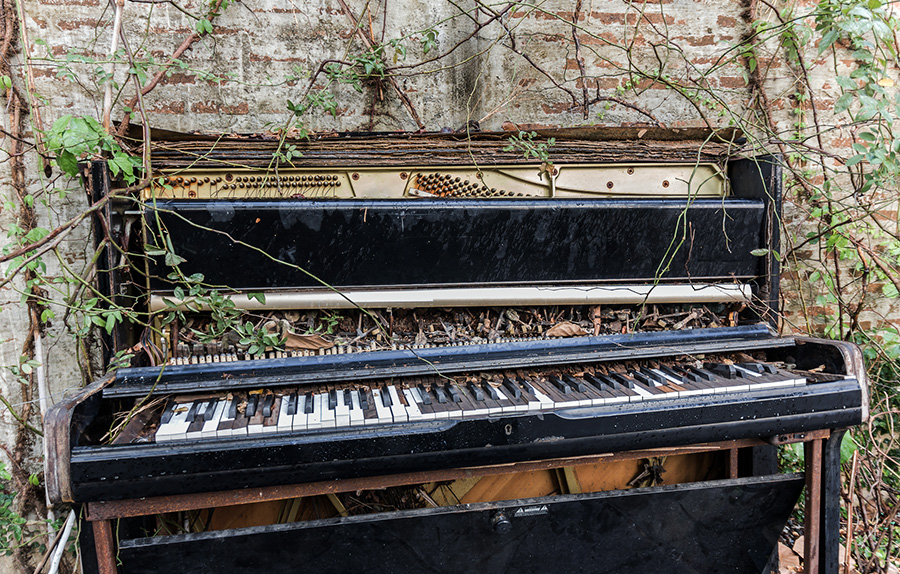Extreme climate swings can damage your piano
Exposing your piano to extreme climate swings can cause damage by shrinking and swelling your piano’s wood. This includes your soundboard, bridge, pin block, keys and hammers. In addition, dryness in the winter and high humidity in the summer cause pianos to go out of tune and eventually shorten the pianos life span. Pianos require a constant 45% relative humidity year round for the action to perform well and to stay in tune.
How to manage humidity
The best way to produce a constant 45% relative humidity is through the use of a Piano Climate Control System like the Dampp-Chaser Piano Life Saver System. This is a local system mounted inside upright pianos and hidden directly under grand pianos. The system contains one or more dehumidifier bars, one or more humidifier tanks and a humidistat brain that automatically cycles back and forth between the two systems to maintain 45% relative humidity.
An intermediate solution which has limited success, is to air condition the room or house in the summer and to use a large floor standing humidifier in the winter. Unfortunately, an air conditioner shuts off when the desired temperature is reached and also stops dehumidifying. House air conditioners are generally unable to reduce relative humidity below 60%. Floor standing humidifiers are noisy and the amount of moisture in the room required to reach 45% can cause continuous condensation on the windows and walls prompting the growth of mould. In both cases, its questionable if the piano will ever reach 45% and most certainly will not be able to maintain it.
Pianos with no form of climate control need lots of TLC. The damaging effects of environmental changes are hard on the wood in pianos. Since your piano is made primarily of wood, our climate is hard on your piano.
